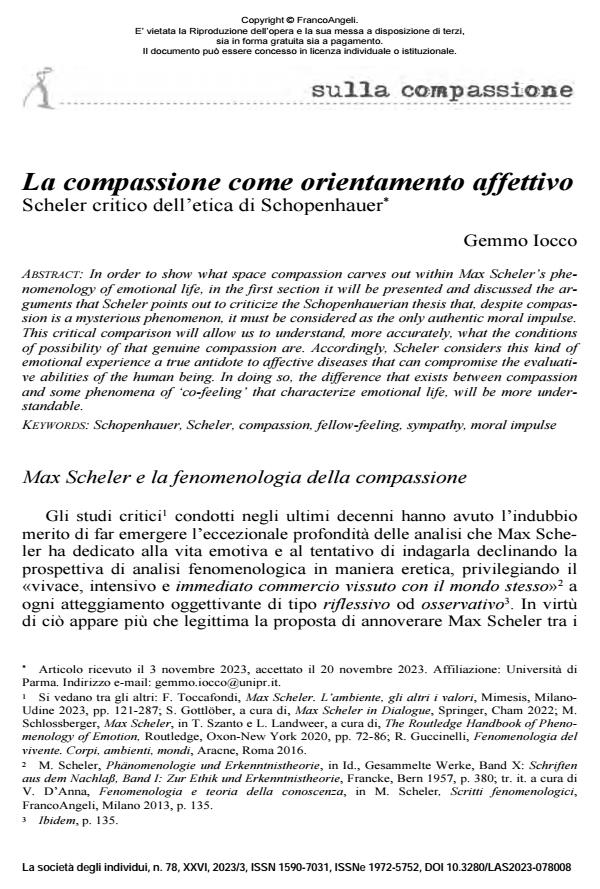La compassione come orientamento affettivo Scheler critico dell’etica di Schopenhauer
Titolo Rivista SOCIETÀ DEGLI INDIVIDUI (LA)
Autori/Curatori Gemmo Iocco
Anno di pubblicazione 2024 Fascicolo 2023/78
Lingua Italiano Numero pagine 12 P. 102-113 Dimensione file 99 KB
DOI 10.3280/LAS2023-078008
Il DOI è il codice a barre della proprietà intellettuale: per saperne di più
clicca qui
Qui sotto puoi vedere in anteprima la prima pagina di questo articolo.
Se questo articolo ti interessa, lo puoi acquistare (e scaricare in formato pdf) seguendo le facili indicazioni per acquistare il download credit. Acquista Download Credits per scaricare questo Articolo in formato PDF

FrancoAngeli è membro della Publishers International Linking Association, Inc (PILA)associazione indipendente e non profit per facilitare (attraverso i servizi tecnologici implementati da CrossRef.org) l’accesso degli studiosi ai contenuti digitali nelle pubblicazioni professionali e scientifiche
In order to show what space compassion carves out within Max Scheler’s phe¬nomenology of emotional life, in the first section it will be presented and discussed the ar¬guments that Scheler points out to criticize the Schopenhauerian thesis that, despite compas¬sion is a mysterious phenomenon, it must be considered as the only authentic moral impulse. This critical comparison will allow us to understand, more accurately, what the conditions of possibility of that genuine compassion are. Accordingly, Scheler considers this kind of emotional experience a true antidote to affective diseases that can compromise the evaluati¬ve abilities of the human being. In doing so, the difference that exists between compassion and some phenomena of ‘co-feeling’ that characterize emotional life, will be more under¬standable.
Parole chiave:Schopenhauer, Scheler, compassion, fellow-feeling, sympathy, moral impulse
Gemmo Iocco, La compassione come orientamento affettivo Scheler critico dell’etica di Schopenhauer in "SOCIETÀ DEGLI INDIVIDUI (LA)" 78/2023, pp 102-113, DOI: 10.3280/LAS2023-078008